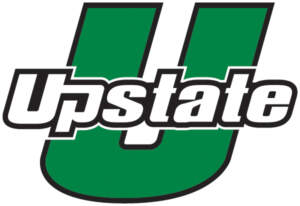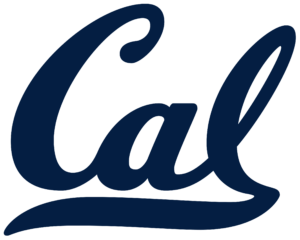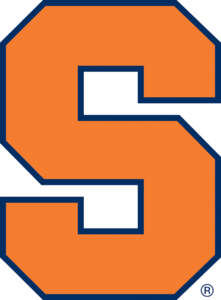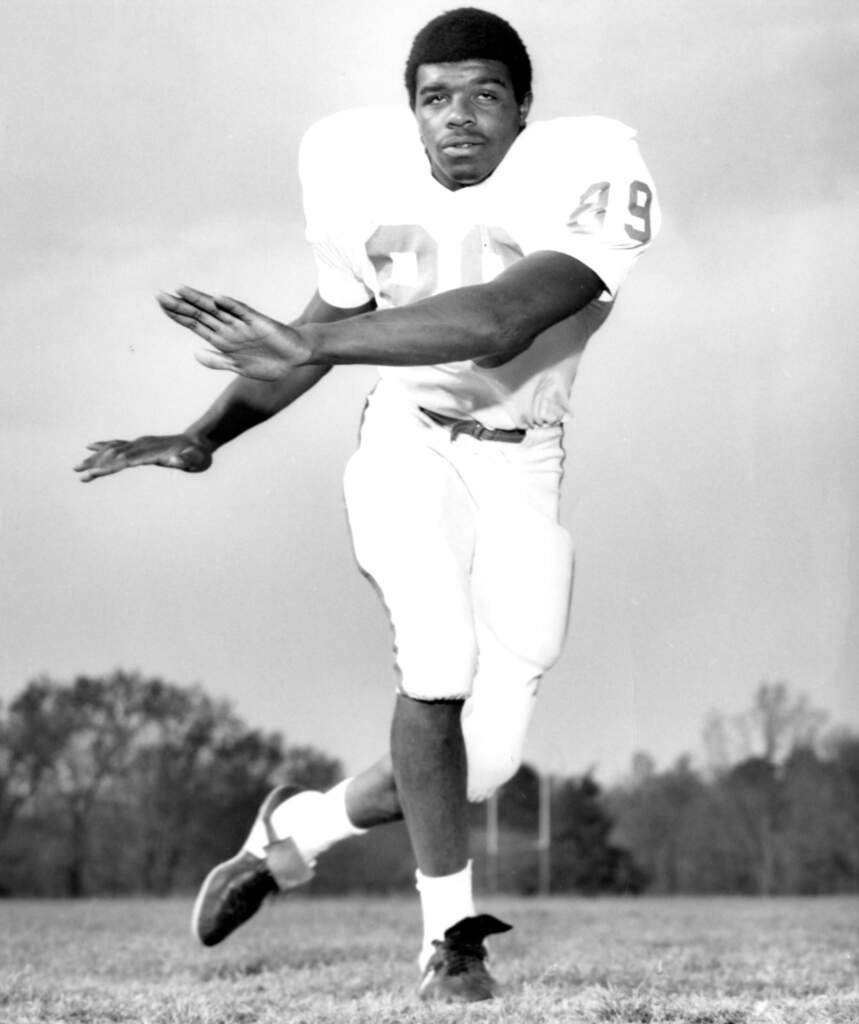Note: The following appears in the June issue of Orange: The Experience. For full access to all of the publication’s content, join IPTAY today by calling 864-656-2115.
By Hannah Davis // Clemson University Creative Services
Dressed in full gear, Clemson quarterback Cole Stoudt stood perfectly still next to the mannequins in the Tigers’ display in the front lobby of the WestZone. As his unsuspecting teammates walked by, they received quite a fright when he jumped out and revealed he was not a statue. A few startled yells and wild punches later, the football team had a good laugh, and so did more than one million viewers on YouTube.
Clemson’s athletic communications department secretly filmed the prank to kick off the 2014 football preseason, and in just a few weeks the video was featured on CBS’s 60 Minutes, ESPN’s SportsCenter and dozens of national sports sites. The tremendous response to a lighthearted behind-the-scenes look at what it’s like to be a Clemson Tiger was undeniable.
“We really endeavor to bring color and excitement to the stories of our student-athletes, rather than just focusing on specific accomplishments,” said Associate Director of Creative Media Jeff Kallin. “We’re not sitting in a press box with poker faces — we’re part of the Clemson Family, too, and we want people to see how much fun we have here.”
Building a Creative Team, Telling the Stories of Student-Athletes and Engaging the Fans
With the explosion of technology, college athletic programs all over the country are utilizing new platforms for authentic communication with their fans. Now more than ever, Clemson’s athletic communications team is flexing its creative muscles to stay at the forefront of a transition from traditional to digital media.
In the past when local newspapers, radio stations and television broadcasts were the only ways for fans to get updates on Clemson sporting events, employees worked tirelessly to provide the media with exhaustive game notes and lengthy press releases. Today, staff members create and coordinate thousands of pieces of multimedia content, in addition to disseminating statistical information.
“Striving to produce the best and most engaging content we can has given Clemson an edge in college athletics in terms of social media presence,” said Coordinator of Digital Media Nik Conklin. “It’s a continual process of learning what works, what doesn’t and what has the greatest impact on our target audience.”
The Vision
Two years ago, Clemson Athletics began developing a game plan to shift from a traditional sports information office to a dynamic athletic communications department.
Director of Athletics Dan Radakovich arrived on campus in January 2013 poised to adjust to the changing marketplace, in terms of how fans received information.
“Telling human interest stories about student-athletes is not necessarily the purview of traditional media; more and more fans are looking to us to be that news source,” Radakovich said.
The communications team is committed to putting resources behind content that engages fans with whatever program they choose to support. This means providing not only facts about player performance, but also a deeper look into their unique personalities. Entertaining content centered on the joys and tribulations of being a student-athlete now complements the must-have information about Clemson sporting events.
“We want to let our fans know who’s beneath the helmet or inside the jersey — to offer a wider-lens view of Clemson’s athletic programs that people looking in from the outside normally wouldn’t have an opportunity to experience,” said Radakovich. “That core value of family culture is how the vision of strategically communicating with our fans was born.”
Pushing Clemson to the cutting edge digitally meant bringing new faces on board for a melding of creative minds with veteran employees. One of the main outreach goals was and is ensuring the team’s efforts strike a positive chord with a diverse market.
“Those initial conversations were about identifying our constituent groups — alumni, students, fans and prospective recruits — and crafting a plan to execute our vision of communicating directly to that audience,” said Assistant Athletic Director for Athletic Communications Joe Galbraith. “Our primary objective is to tell the dynamic stories of nearly 500 athletes across 19 sports.”
And while the vast following for Clemson football continues to grow, the department makes it a priority to generate publicity for the Olympic sports as well.
“The challenge is getting fans to know what exactly a rower does, or what it takes to be a track star,” said Director of New and Creative Media Jonathan Gantt. “If some of the Olympic programs relied solely on outside media for coverage, it might not happen. But we can use audiovisual content to bring as much attention as possible to these incredible student-athletes.”
The transition from sports information to athletic communications is more than just a name change. Many job duties have transformed, with staff spending less time working on media guides and more time brainstorming digital advancement.
As the department steps into the role of primary storyteller, its leaders continue to demonstrate the ability to be forward thinking and innovative. All are mindful of the fact that Clemson Athletics provides a visible way to connect the campus with alumni, potential students and even causal onlookers on a regional and national news front.
“Anything we do needs to fit the distinctive nature of Clemson,” Radakovich said. “It’s important for us not to forget about the attributes that make us great. We’re always challenging ourselves to look for different ways to communicate. And fortunately we have some of the brightest people assigned to that task.”
The Communications Team
With the decision to restructure, athletic communications added several positions to better handle its ever-changing demands. Because of the behind-the-scenes work of staff members, communication practices have made incredible advances across the board — print, web, social media and video — in a short period of time.
Coming from varied backgrounds, they all share one common goal: help Clemson’s sports programs reach their full potential.
Formerly employed at Mississippi State, Galbraith had no connections to Clemson before his first day of work; now he feels right at home.
“It’s a chance to be on the front end of reshaping the way we do things to make them better,” said Galbraith, who oversees the direction of the department.
Gantt spent years working in Major League Baseball with the Tampa Bay Rays. When the chance came to lead drastic change within the sports industry, he jumped.
“To be part of an exciting shift in a large organization — those opportunities don’t come along very often,” said Gantt, who sets strategy for digital presence and leads the creative group.
A Boston native and Clemson alum, Jeff Kallin handles the graphic needs of the department.
“One of the things I enjoy most is taking advantage of spur-of-the-moment story opportunities that really resonate with people,” Kallin said. “We have the best direct access you can get to players and coaches in all of our sports, and we take advantage of that when it comes to content creation.”
A former student-athlete at Long Island University in Brooklyn, Conklin takes special interest in reaching out to Clemson’s students who show creative potential, especially student-athletes.
“You never know what kind of spark you might ignite that becomes a full-blown passion down the road,” Conklin said. “We want to enhance their overall student-athlete experience, so that after the last game is played and the whistle blows, they can go confidently into the real world with more than one valuable skill.”
Involvement from student workers is one of the most exciting elements of change. The department has grown exponentially because of students who are given assignments to brainstorm, shoot, edit and produce high-end graphics, video and social content.
“Some of our best content is contributed by student workers,” Galbraith said. “Part of the educational vision at Clemson is providing real-world experience for our students that makes them competitive in the workforce.”
The Student-Athletes
The athletic communications department’s impact on recruiting is meaningful.
“The proliferation of technology makes it possible to show potential recruits what it’s really like to be a Clemson Tiger,” Galbraith said.
In 2014, the department created a conditioning video for the men’s soccer program in the offseason. When the team went on a run in the ACC Tournament at the end of an excellent season, new soccer recruits who followed the team’s progress throughout the year knew they might have the same opportunity to showcase their athletic journey.
The department does everything it can to help attract recruits, and while social media alone probably won’t motivate a recruit to commit or not commit, regular and positive online content makes a difference.
“While personal relationships with prospects and visits to our campus are still the most important part of recruiting, communication through social media and other outlets is very important,” said Dabo Swinney, head football coach. “We have added many staff members to this area and they have done a great job getting prospects to see information about our school and the football program. It certainly has an impact, especially the graphics and the videos that are produced.”
The Fans
A hype video created last year by athletic communications employees and students perfectly captured the sweat and strain that goes into the football team’s workouts. The video received such an enthusiastic reaction on social media that it was played on the scoreboards in Memorial Stadium before the fourth quarter of home games. During the 2014 Russell Athletic Bowl in Orlando, the video didn’t play, but the department received an animated tweet from a Clemson fan in the stands; he was watching the video on his phone to pump up the crowd gathered around him.
That kind of response lets the department know they’re producing quality work.
“People know the video and love it and carried it all the way to Orlando,” Conklin said. “We want to build relationships with fans, to make sure all of our content has that kind of reach.”
The department has an important part in shaping fans experiences — from making sure they know where to park for games, to creating engaging graphics for the video boards.
“When people come to our sporting events, they feel like they’ve spent their entertainment dollar wisely,” Radakovich said. “And that goes beyond what they see on the court or field — it’s a holistic experience.”
“If we’re able to listen to people and find out what the challenges are and what we can do to help, we want to do that,” Galbraith said. “And you find that’s true about Clemson in general. People want to help you find the ticket gate and the parking lot, and proudly show you that hospitality is something we all take great pride in.”
Athletic communications staff running social media accounts are often the interface between the fans and teams.
“It’s reliant on us to respond to comments and push out upbeat messages,” Gantt said. “Often you don’t have a chance for face-to-face interactions, so when people ask us questions online we take our response seriously. People should know we’re not just a Twitter account, but real people who want them to enjoy their experience — whether it’s in our social space or in our stadium.”
The Future
Last fall, Kallin traveled to an away game in St. Thomas with the women’s basketball team, which took place during Clemson’s annual rivalry football game against the University of South Carolina. During halftime of the basketball game, he was busy making the final score graphic for the football game.
“The fact that I was thousands of miles away in the Caribbean and creating a graphic to share with fans in Death Valley is indicative of how things have changed,” Kallin said. “And I loved every second of it.”
Change like this didn’t happen overnight. The department has made great strides and will accomplish more as technology continues to develop. But even when everything else changes, the basic principles of storytelling stay the same.
“We’ve gone from being a facilitator for others to being a storytelling entity ourselves,” Galbraith said. “Our responsibility is to show those who care about Clemson that the values they cherish here are still in place, and whether they graduated in 1960 or 2014, those emotional ties can be stirred by the work our department does.”
Every story opportunity is approached with two concepts: either bringing in the idea of the Clemson Family or answering what it’s like to be a Clemson Tiger.
“We’re working on deeper, well-rounded and more complete stories,” Kallin said. “The ultimate goal is to consistently produce packages of videos, photos, graphics and written content. Our voice is less formal and stuffy, striking a balance of being heartfelt and bringing stories to life in a fun way.”
Where the department is today looks much different from where it was two years ago. As the staff continues down the roadmap to improve overall communication, they want to maximize both traditional means and digital opportunities. For now, they’ve set and reset standards for creating incredible content.
It’s not just Clemson fans that notice a difference.
Last year, Louisville came to Clemson for its first football game on campus. For the next two weeks, the athletic communications department was flooded with positive emails, letters and phone calls about how well the Louisville fans were treated and what a great experience they had at Clemson.
“It was a fresh set of eyes coming in, seeing what we’re doing and saying we’re doing it well,” Radakovich said. “And now we have to make sure we continue to live up to that lofty praise.”

 Pitt
Pitt  North Carolina
North Carolina  Elon
Elon  SMU
SMU  Syracuse
Syracuse  Alabama
Alabama  Tennessee
Tennessee  Charlotte
Charlotte  USC Upstate
USC Upstate  Ohio State
Ohio State  Georgia State`
Georgia State`  Ohio University
Ohio University  Virginia Tech
Virginia Tech  Indiana
Indiana  South Carolina
South Carolina  South Carolina
South Carolina  Campbell
Campbell  UAB
UAB  East Tennessee State
East Tennessee State  LSU
LSU  South Carolina
South Carolina  App State
App State  North Carolina A&T
North Carolina A&T  Charlotte
Charlotte  Troy
Troy  Georgia
Georgia  VCU
VCU  Georgia
Georgia  Stanford
Stanford  USC Upstate
USC Upstate  Georgia Tech
Georgia Tech  Wofford
Wofford  California
California  Queens
Queens  Georgetown
Georgetown  Norfolk State
Norfolk State  Louisville
Louisville  Charleston Southern
Charleston Southern  Syracuse
Syracuse  Virginia
Virginia  Florida State
Florida State  Wake Forest
Wake Forest  Miami (Fla.)
Miami (Fla.)  Notre Dame
Notre Dame 





